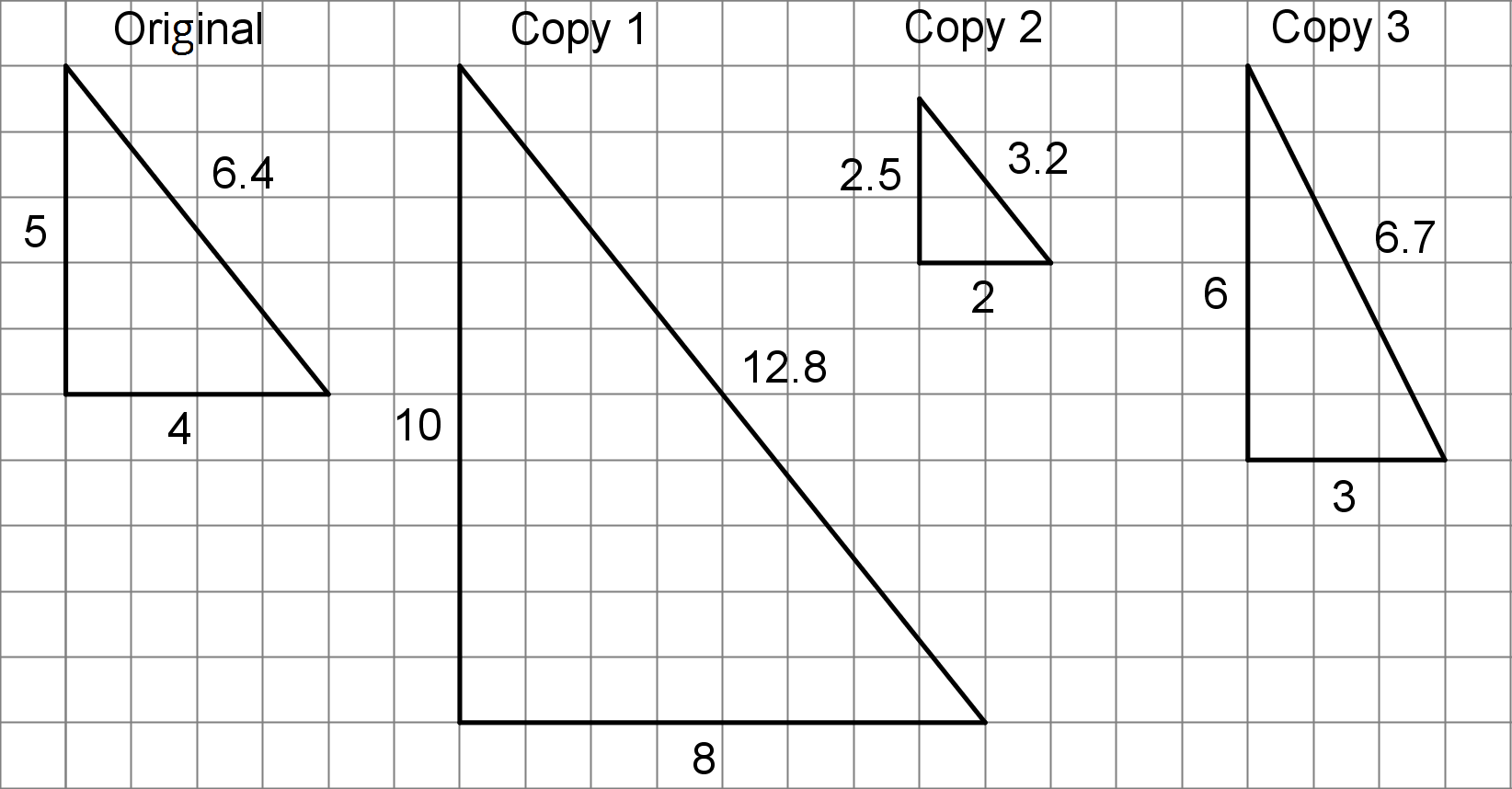 MONTGOMERY COUNTY PUBLIC SCHOOLS
MONTGOMERY COUNTY PUBLIC SCHOOLS
 MONTGOMERY COUNTY PUBLIC SCHOOLS
MONTGOMERY COUNTY PUBLIC SCHOOLS
This week your student will learn about scaling shapes. An image is a scaled copy of the original if the shape is stretched in a way that does not distort it. For example, here is an original picture and five copies. Pictures C and D are scaled copies of the original, but pictures A, B, and E are not.

In each scaled copy, the sides are a certain number of times as long as the corresponding sides in the original. We call this number the scale factor. The size of the scale factor affects the size of the copy. A scale factor greater than 1 makes a copy that is larger than the original. A scale factor less than 1 makes a copy that is smaller.
Here is a task to try with your student:

Solution:
This week your student will be learning about scale drawings. A scale drawing is a two-dimensional representation of an actual object or place. Maps and floor plans are some examples of scale drawings.

The scale tells us what some length on the scale drawing represents in actual length. For example, a scale of “1 inch to 5 miles” means that 1 inch on the drawing represents 5 actual miles. If the drawing shows a road that is 2 inches long, we know the road is actually
Scales can be written with units (e.g. 1 inch to 5 miles), or without units (e.g., 1 to 50, or 1 to 400). When a scale does not have units, the same unit is used for distances on the scale drawing and actual distances. For example, a scale of “1 to 50” means 1 centimeter on the drawing represents 50 actual centimeters,1 inch represents 50 inches, etc.
Here is a task to try with your student:
Kiran drew a floor plan of his classroom using the scale 1 inch to 6 feet.
Solution:
IM 6–8 Math was originally developed by Open Up Resources and authored by Illustrative Mathematics, and is copyright 2017-2019 by Open Up Resources. It is licensed under the Creative Commons Attribution 4.0 International License (CC BY 4.0). OUR's 6–8 Math Curriculum is available at https://openupresources.org/math-curriculum/.